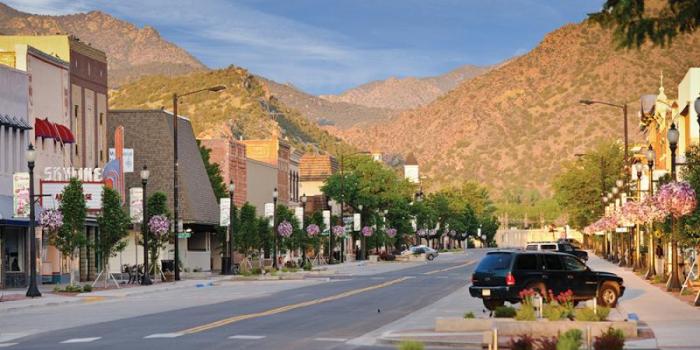
The Royal Gorge Region’s rich history and diverse natural heritage come alive in this series of Heritage Guides. Printed Guides are available at area museums, chambers of commerce and visitor destinations. The guides may also be downloaded at www.fremontheritage.com or follow the link.
Downtown Cañon City: Dating back to the 1860s, the Downtown Historic District is compact and walkable. Listed in the National Register of Historic Places, it includes 280 acres and 80 buildings. Allow about three hours to enjoy a stroll down Main Street, take in the history of 36 buildings and visit the many shops and restaurants.
Downtown Florence: The recently designated Downtown Florence Historic District includes about 10 blocks along Main and Front Streets, and 52 buildings. The walkable tour describes 21 buildings and takes about two hours. Enjoy the many antique shops and wonderful restaurants that now occupy this charming town; whose booming 1920s economy was built on oil wells, coal mines and ore processing.
Skyline Drive: The entrance to this 2.8-mile scenic drive is located two miles west of Cañon City on US-50 and begins with an archway built in 1932 with stones from many states. A dinosaur track lay along the one-way drive along with turnouts for dramatic views. This is also an enjoyable hike that begins at the foot of the drive where interpretive signs are located near the Floral Street Trailhead.
Western Fremont County: This 50-mile scenic drive along the Arkansas River on US-50 between Cañon City and Salida explores area history and early economic activity with 37 stops of interest.
Historic Howard: Near the county’s western border, Howard (est. 1871) was an important railroad shipping point. This 18-stop tour takes in the town square amoung other historical sites.
Cemeteries of Fremont County: This 74-page guide includes nearly 20 cemeteries that reflect area history.
Coal Camps of Fremont County: This 86-page guide provides the history of the towns and coal camps that grew to support the Cañon City Coal Field, one of Colorado’s earliest.
